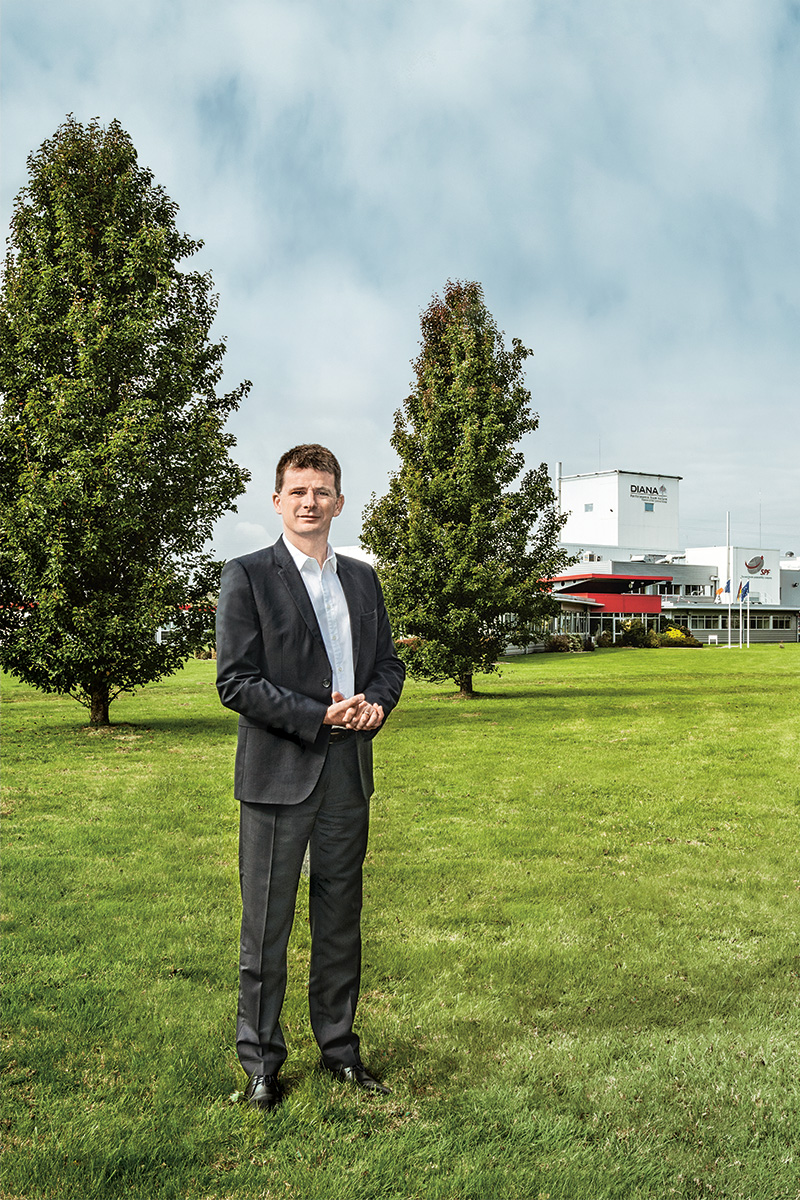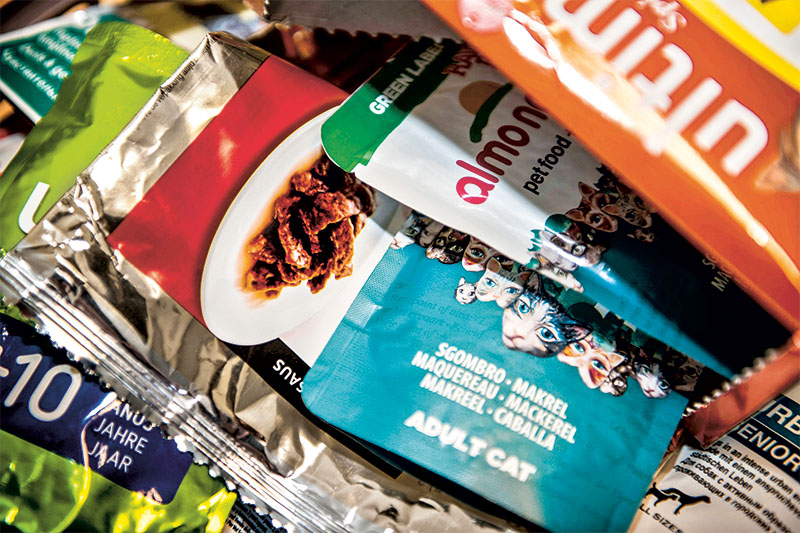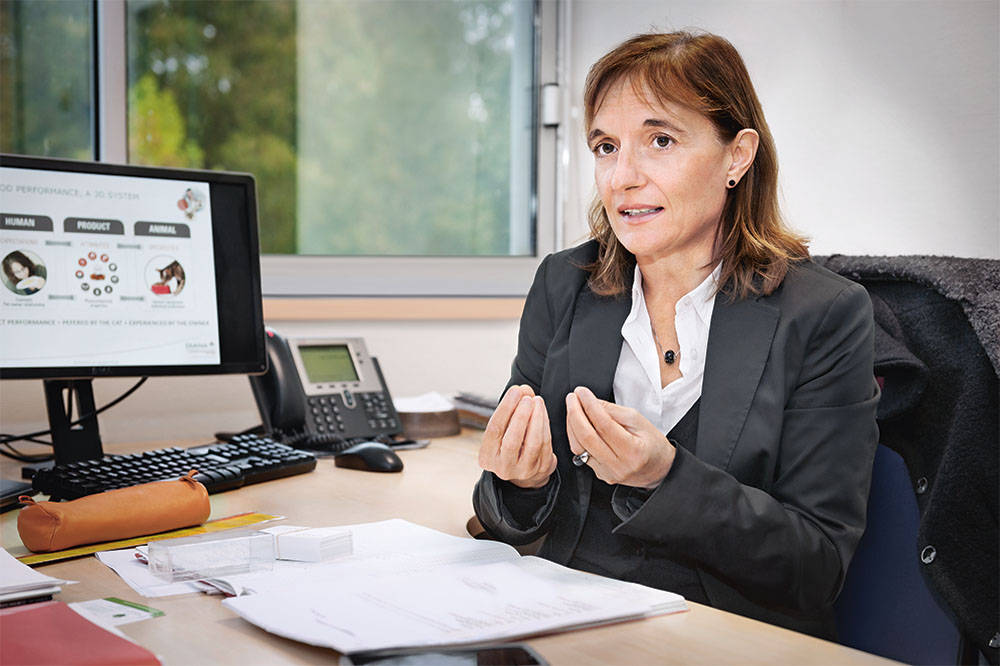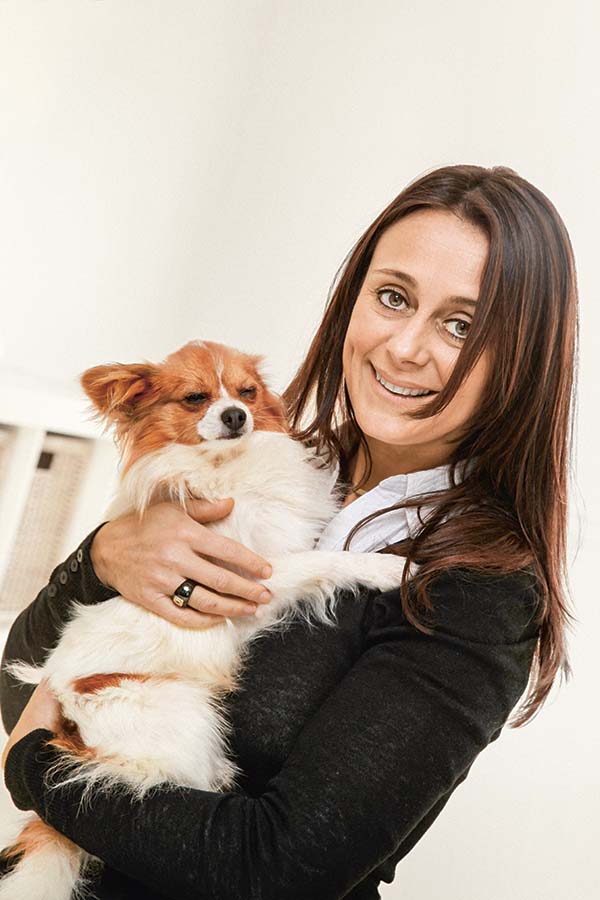Members of the company’s own panel of experts: The cats choose between different foods – this represents how the experts evaluate products developed by the Diana Pet Food team.
“What is the third largest country in terms of population behind China and India?” asks Rémi Cristoforetti, President of Diana Pet Food. He quickly supplies the answer himself: “Not the USA, but ‘pet land.’” 620 million cats and dogs populate this imaginary nation, which is growing rapidly thanks to urbanization – animals provide companionship even in the tiniest of apartments – and the development of a middle class with notable purchasing power.
Those trends point to good prospects for the Symrise Business Unit Diana Pet Food whose 800 employees worldwide develop and manufacture pet food ingredients that increase the well-being of cats and dogs and boost pet owner satisfaction. “We support our customers by offering them solutions related to the most critical pet food performance levers: palatability, health and nutrition, and protection,” explains the manager.
Across the whole portfolio, Diana Pet Food has been adapted to work in all pet food types, from dry kibbles to wet pouches and treats. “The pet food market is growing fast, and owners are increasingly prepared to invest more in their pets,” says Cristoforetti. In most of the countries, cats and dogs are often viewed as full-fledged members of the family. “There is a reason why we speak about pet owners as ‘parents.’ They have a close emotional bond to their pets. The term ‘pet tutor’ is also catching on for people who see their pets as individuals and partners.”

Rémi Cristoforetti, President of Diana Pet Food
Owners will only buy the product again if the pet eats it.Rémi Cristoforetti, President of Diana Pet Food

That is why Diana Pet Food’s strategy increasingly aims to make the experience of feeding pets more pleasurable for owners. “Pet food properties, animal specificities and pet owners’ expectations are the three aspects we always have in mind when designing new solutions to improve the performance of pet food,” says Rémi Cristoforetti. Pet food manufacturers need to make sure that their food attributes will match animal preferences and nutritional requirements while satisfying their parents. “Do the pets eat the food or not?” says Cristoforetti. “Owners will only buy the product again if the pet eats and enjoys it and if it makes the pet feel good!”
This increasing consideration of pet owner expectations has a direct impact on Diana Pet Food Research and its innovation axis. A major topic for Diana Pet Foodʼs Head of Research Isabelle Guiller is the smell that emanates from the opened cans and bags containing the food. “We have diverging interests here. Dogs need a strong olfactory incentive, while owners find these odors mostly unpleasant.” That is why Diana Pet Food is working on a dedicated program to design solutions that will satisfy both sides, taking into account the differing odor sensitivities between humans and animals. “We mask unappealing notes in such a way that owners no longer perceive them, but dogs can still pick it up,” explains Guiller. Isabelle works with about 100 colleagues all around the globe – ethologists, biochemists, flavorists, veterinarians, statisticians and nutrition experts – on perfecting the smell, taste, texture, color, but also nutrition and safety of the food.
Part of the research team is some other very special employees that contribute greatly to the development of Diana Pet Food products. “In France, Brazil and the US, we have our own dog and cat expert panels that evaluate our products every day.” Panelis, the Diana Pet Food expert center in palatability measurement, is a resource for studies on dog and cat feeding behavior and for an understanding of pet-owner interaction. “With 600 cats and 250 dogs representing more than 60 breeds, Panelis is a unique expert collection of pet food’s final consumers!” says Guiller.
At Panelis, the research goes far beyond just measuring which animals eat what and how much. The French site launched a unique 1,000-square-meter research area dedicated to innovation, called the Pet Sens’ Innov, last September. “Studies conducted in the Pet Sens’ Innov cover varied aspects of pets’ sensory perception, including gustation and olfaction, but also somesthesia (bodily sensation awareness) and acoustics,” says Christelle Tobie, Business Development Manager at Panelis. “Research also focuses on understanding pets’ emotions throughout the whole meal through the use of innovative indicators, such as the assessment of pets’ excitement before, during and after food consumption. All these observations are performed under conditions that secure pets’ well-being without any invasive methods, according to Panelis’ ethical guidelines,” Christelle Tobie explains.

Isabelle Guiller works with about 100 colleagues on perfecting the smell, taste, texture, color, form, moisture and thickness of the food.

Pet Sens’ Innov – Diana Pet Food new center dedicated to innovations in pet food performance measurement and studies on animal behaviour.
Several catteries have been equipped with high-tech automated feeding stations combined with video and tracking systems. Christelle Tobie continues, “Monitoring cats’ activity around the clock is a great tool. It provides enriched palatability measurement data to assess the impact of different sensory modalities on animal feeding behavior.” She then adds, “Furthermore, it expands expertise in animal behavior evaluation, including well-being indicators, transmission of olfactory messages among pets, social interactions or individual profiles.”

Christelle Tobie, Panelis Business Development Manager
